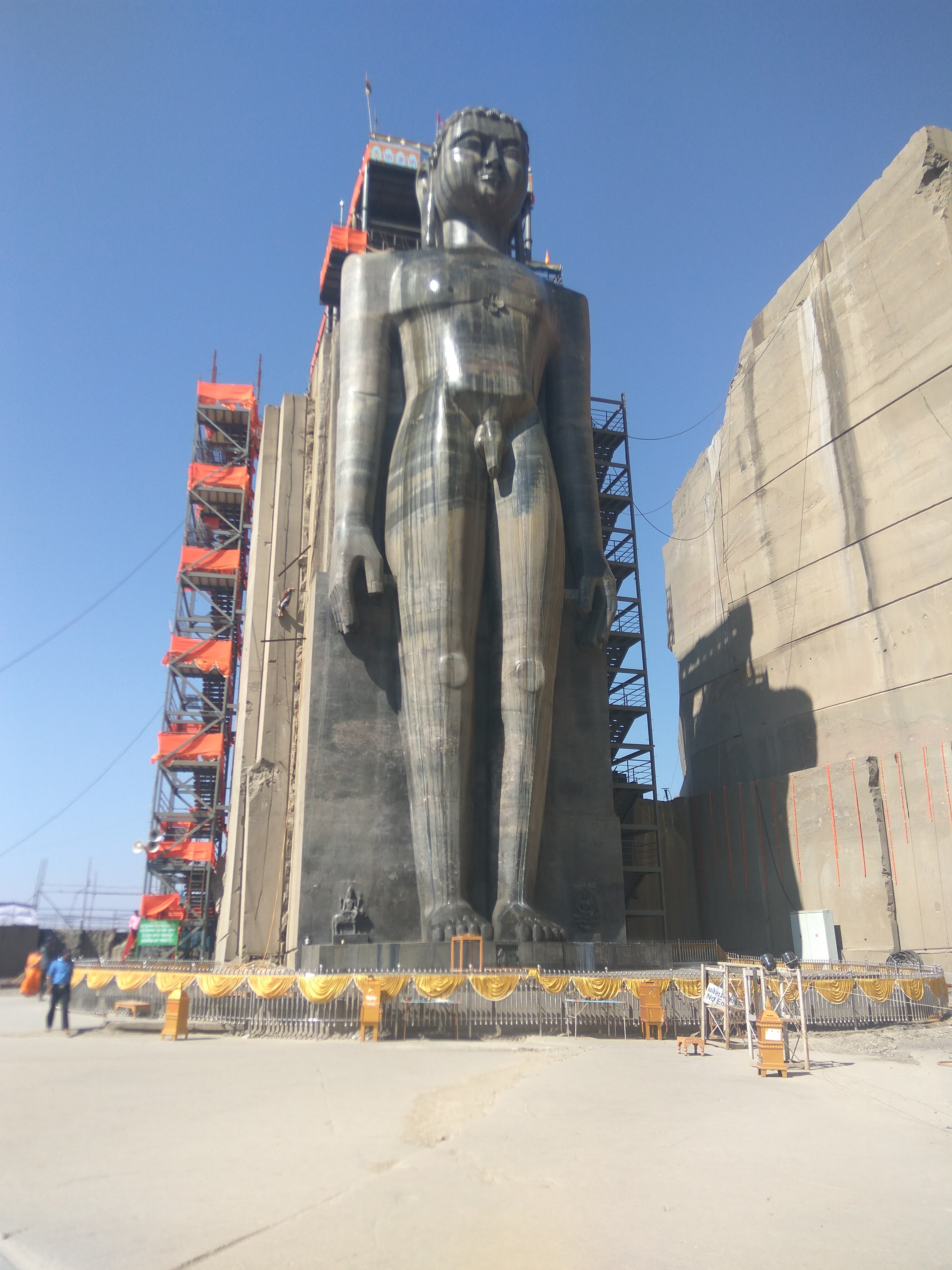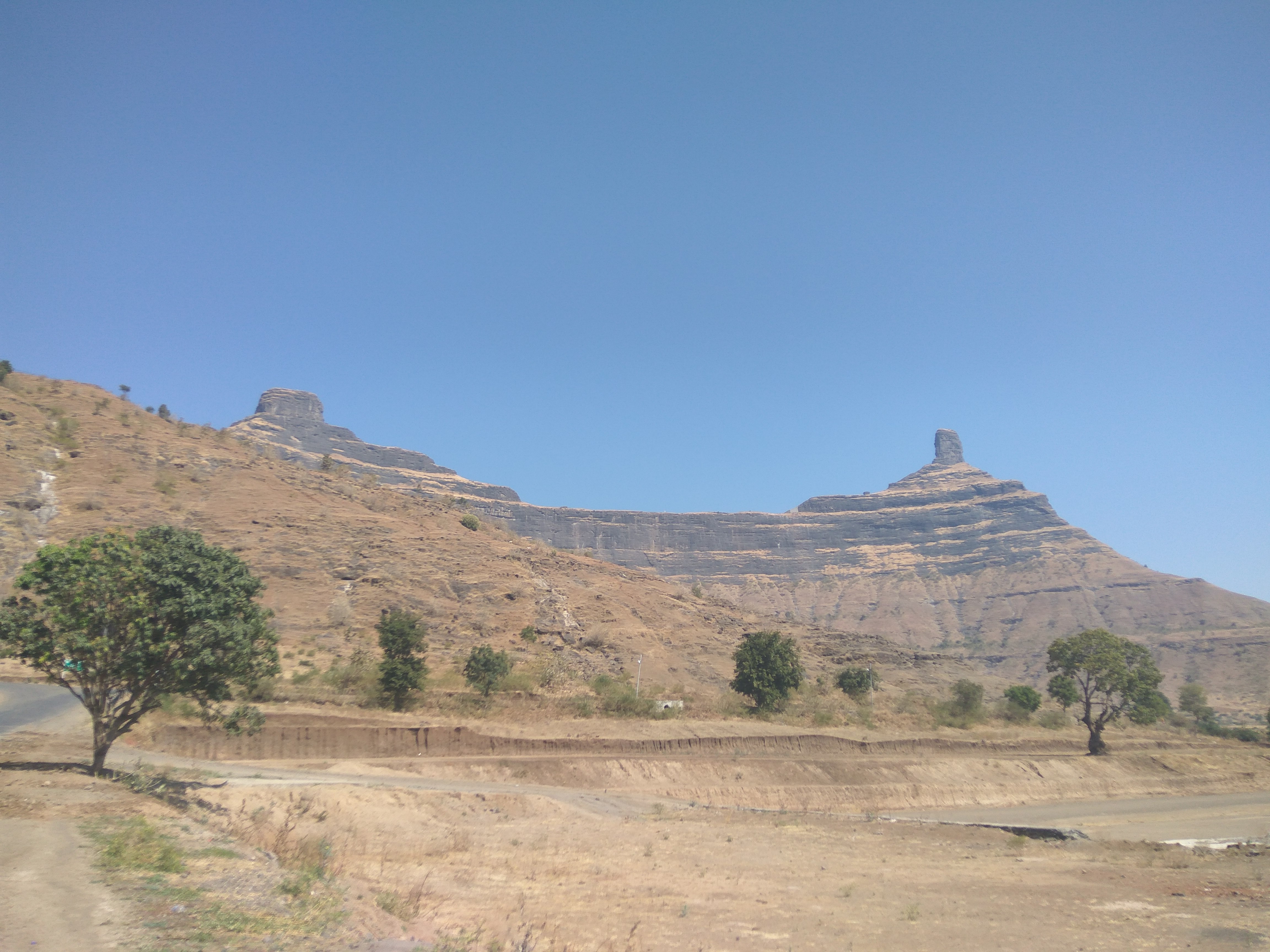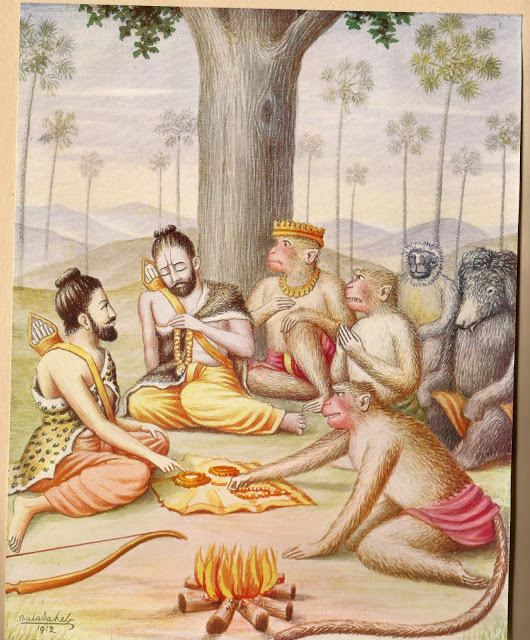|
Mangi Tungi
Mangi-Tungi is a prominent twin-pinnacled peak with plateau in between, located near Tahrabad about 125 km from Nashik, Maharashtra, India. Mangi, high above sea level, is the western pinnacle and Tungi, high, the eastern. Mangi-Tungi is from the city of Satana. Overview There are numerous temples and is considered sacred in Jainism. It enshrines images of Tirthankaras in several postures including '' Padmasana'' and ''kayotsarga''. Sometimes, it is described as ''Siddha Kshetra'', meaning a gateway to the state of enlightenment. Around 3,500 (7,000 Up & Down) steps lead to the foot of the peak, which is enriched with several monuments of historical and religious prominence. Besides, there are numerous caves named after great Tirthankaras such as Mahavira, Rishabhanatha, Shantinatha and Parshvanatha. A grand fair is held here annually during ''Kartik'' (September–October) where people visit in large numbers to witness festival. There are many inscriptions on idols, ... [...More Info...] [...Related Items...] OR: [Wikipedia] [Google] [Baidu] |
Tirtha (Jainism)
In Jainism, a ''tīrtha'' ( sa, तीर्थ "ford, a shallow part of a body of water that may be easily crossed") is used to refer both to pilgrimage sites as well as to the four sections of the ''sangha''. A ''tirtha'' provides the inspiration to enable one to cross over from worldly engagement to the side of ''moksha''. Jain ''tirthas'' are located throughout India. Often a ''tirtha'' has a number of temples as well as residences (dharmashala) for the pilgrims and wandering monks and scholars. Types ''Tirtha'' sites include: * ''Siddhakshetra''s or site of ''moksha'' liberation of an '' arihant'' (''kevalin'') or Tirthankaras like Ashtapada Hill, Shikharji, Girnar, Pawapuri, Palitana, Mangi-Tungi and Champapuri (capital of Anga) * ''Atishayakshetra''s where divine events have occurred like Mahavirji, Rishabhdeo, Kundalpur, Aharji etc. * ''Puranakshetra''s associated with lives of great men like Ayodhya, Vidisha, Hastinapur, and Rajgir * ''Gyanakshetra'': associated w ... [...More Info...] [...Related Items...] OR: [Wikipedia] [Google] [Baidu] |
Statue Of Ahimsa
The ''Statue of Ahimsa'' is located at Mangi-Tungi, in Nashik, in the Indian state of Maharashtra. It is the tallest Jain statue in the world as per Guinness World Records. The statue depicts the first Jain Tirthankara, Rishabhanatha. The statue is tall – including pedestal. The statue has been carved out of the Mangi-Tungi hills, which are considered to be sacred by the Jains. The statue was built by the inspiration of the Jain nun (Aryika) Gyanmati, and under the guidance of Aryika Chandanamati. The project was chaired and directed by Raveendra Kirti. The construction of the statue started in 2002 under the guidance of Chief Secretary Pannalalji Papdiwal and Chief engineer C. R. Patil working president Anil Jain-Delhi. It was completed on 24 January 2016 (Tithi-Magh Krishna Ekam). The statue was sculpted by Moolchand Ramchand Nahata Firm. History The inspiration of the idol was given by the Jain nun Gyanmati in 1996. ''Shilapujan'' (foundation stone laying ceremony) ... [...More Info...] [...Related Items...] OR: [Wikipedia] [Google] [Baidu] |
Devendra Fadnavis
Devendra Gangadharrao Fadnavis (Marathi pronunciation: ��ेवेंद्र फडणवीस born 22 July 1970) is an Indian politician serving as the 9th and current Deputy Chief Minister of Maharashtra since 30 June 2022. He served as the 18th Chief Minister of Maharashtra from 31 October 2014 to 12 November 2019. Having been sworn in at the age of 44, he's the second-youngest Chief Minister in Maharashtra's history after Sharad Pawar. He served a 5-day long second term as Chief Minister during the 2019 Maharashtra political crisis, before resigning on 28 November 2019. On 30 June 2022, he took oath as the Deputy Chief Minister of Maharashtra, following the 2022 Maharashtra political crisis. He is an activist with the Bharatiya Janata Party and the Rashtriya Swayamsevak Sangh. Fadnavis represents the Nagpur South West constituency in the Maharashtra Legislative Assembly. Early life and education Fadnavis was born in a Marathi Hindu Deshastha Rigvedi Brahmin family ... [...More Info...] [...Related Items...] OR: [Wikipedia] [Google] [Baidu] |
Jain
Jainism ( ), also known as Jain Dharma, is an Indian religion. Jainism traces its spiritual ideas and history through the succession of twenty-four tirthankaras (supreme preachers of ''Dharma''), with the first in the current time cycle being Rishabhadeva, whom the tradition holds to have lived millions of years ago, the twenty-third ''tirthankara'' Parshvanatha, whom historians date to the 9th century BCE, and the twenty-fourth ''tirthankara'' Mahavira, around 600 BCE. Jainism is considered to be an eternal ''dharma'' with the ''tirthankaras'' guiding every time cycle of the cosmology. The three main pillars of Jainism are ''ahiṃsā'' (non-violence), ''anekāntavāda'' (non-absolutism), and '' aparigraha'' (asceticism). Jain monks, after positioning themselves in the sublime state of soul consciousness, take five main vows: ''ahiṃsā'' (non-violence), '' satya'' (truth), '' asteya'' (not stealing), ''brahmacharya'' (chastity), and '' aparigraha'' (non-possessiveness). Th ... [...More Info...] [...Related Items...] OR: [Wikipedia] [Google] [Baidu] |
Indra
Indra (; Sanskrit: इन्द्र) is the king of the devas (god-like deities) and Svarga (heaven) in Hindu mythology. He is associated with the sky, lightning, weather, thunder, storms, rains, river flows, and war. volumes/ref> Indra's myths and powers are similar to other Indo-European deities such as Jupiter, Perun, Perkūnas, Zalmoxis, Taranis, Zeus, and Thor, part of the greater Proto-Indo-European mythology. Indra is the most referred deity in the ''Rigveda''. He is celebrated for his powers, and as the one who killed the great evil (a malevolent type of asura) named Vritra, who obstructed human prosperity and happiness. Indra destroys Vritra and his "deceiving forces", and thereby brings rains and sunshine as the saviour of mankind. He is also an important deity worshipped by the Kalash people, indicating his prominence in ancient Hinduism. Indra's significance diminishes in the post-Vedic Indian literature, but he still plays an important role in various m ... [...More Info...] [...Related Items...] OR: [Wikipedia] [Google] [Baidu] |
Yakshini
''Yakshinis'' or ''yakshis'' (यक्षिणी sa, yakṣiṇī or ''yakṣī''; pi, yakkhiṇī or ''yakkhī'') are a class of female nature spirits in Hindu, Buddhist, and Jain religious mythologies that are different from devas and asuras (classes of power-seeking beings), and gandharvas or apsaras (celestial nymphs). Yakshinis and their male counterparts, the yakshas, are one of the many paranormal beings associated with the centuries-old sacred groves of India. Yakshis are also found in the traditional legends of Northeastern Indian tribes, ancient legends of Kerala, and in the folktales of Kashmiri Muslims. Sikhism also mentions yakshas in its sacred texts. The well behaved and benign ones are worshipped as tutelaries, they are the attendees of Kubera, the treasurer of the gods, and also the Hindu god of wealth who ruled Himalayan kingdom of Alaka. There are also malign and mischievous yakshinis with poltergeist-like behaviours, that can haunt and curse humans ... [...More Info...] [...Related Items...] OR: [Wikipedia] [Google] [Baidu] |
Yaksha
The yakshas ( sa, यक्ष ; pi, yakkha, i=yes) are a broad class of nature-spirits, usually benevolent, but sometimes mischievous or capricious, connected with water, fertility, trees, the forest, treasure and wilderness. They appear in Hindu, Jain and Buddhist texts, as well as ancient and medieval era temples of South Asia and Southeast Asia as guardian deities. The feminine form of the word is or ''yakshini'' ( sa, यक्षिणी ; Pali:Yakkhini). In Hindu, Jain and Buddhist texts, the has a dual personality. On the one hand, a may be an inoffensive nature- fairy, associated with woods and mountains; but there is also a darker version of the , which is a kind of ghost ( bhuta) that haunts the wilderness and waylays and devours travellers, similar to the . Early yakshas Several monumental yakshas are known from the time of the Maurya Empire period. They are variously dated from around the 3rd century BCE to the 1st century BCE. These statues are monumental ... [...More Info...] [...Related Items...] OR: [Wikipedia] [Google] [Baidu] |
Nila (Ramayana)
In the Hindu epic ''Ramayana'', Nila (IAST: nīla, lit. ''blue''), also spelled as Neela, is a vanara chieftain in the army of Rama, the prince of Ayodhya and avatar of the god Vishnu. He is the commander-in-chief of the monkey army under the monkey king Sugriva and is described as leading the army in Rama's battle against the rakshasa king Ravana of Lanka (identified with modern-day Sri Lanka) and as killing many rakshasas. Though, the ''Ramayana'' credits Nala as the sole builder of the Rama Setu, a bridge across the ocean between Rameswaram (India) and Lanka, enabling forces of Rama to pass over to Lanka, other adaptations of the epic attribute the bridge's construction to both Nala and Nila. Background In the ''Ramayana'', Nila is described as the son of Agni, the fire as God, and as the "Kapishreshtha (foremost among the monkeys) in effulgence, reputation and prowess". An important part of the epic describes the role played by the monkey army in the rescue of Sita, the wif ... [...More Info...] [...Related Items...] OR: [Wikipedia] [Google] [Baidu] |
Sugriva
''This character is about the vanara, in the Ramayana.'' Sugriva ( sa, सुग्रीव, , ) is a character In the ancient Indian epic Ramayana. He is the younger brother of Vali, whom he succeeded as ruler of the vanara kingdom of Kishkindha. Rumā is his wife. He is a son of Surya, the Hindu deity of the sun. As the king of the vanaras, Sugriva aided Rama in his quest to liberate his wife Sita from captivity at the hands of the rakshasa king Ravana. Nomenclature He is also known as jv, Sugriwa, th, Su-khrip, lo, Sugeep, km, Sukhreeb, Creole: ''Soogrim'', lo, Sangkip, ta, Cukkirivan, my, Thugyeik, Sugreeva or Sugreev. Legend The story of Sugriva is part of Ramayana and in an abbreviated version, is also present in the Mahabharata. The king of Kishkindha, Vrikshraja, was a divine creature born from Brahma’s tilaka. He had the body of a human and face and tail of a monkey. He was instructed to roam the forests and kill demons. One day, Vriksharaja entered a ... [...More Info...] [...Related Items...] OR: [Wikipedia] [Google] [Baidu] |
Siddha
''Siddha'' (Sanskrit: '; "perfected one") is a term that is used widely in Indian religions and culture. It means "one who is accomplished." It refers to perfected masters who have achieved a high degree of physical as well as spiritual perfection or enlightenment. In Jainism, the term is used to refer to the liberated souls. ''Siddha'' may also refer to one who has attained a siddhi, paranormal capabilities. Siddhas may broadly refer to siddhars, naths, ascetics, sadhus, or yogis because they all practice sādhanā. The Svetasvatara (II.12) presupposes a siddha body. Jainism In Jainism, the term ''siddha'' is used to refer the liberated souls who have destroyed all karmas and have obtained moksha. They are free from the transmigratory cycle of birth and death ('' saṃsāra'') and are above '' Arihantas'' (omniscient beings). Siddhas do not have a body; they are soul in its purest form. They reside in the ''Siddhashila'', which is situated at the top of the Univer ... [...More Info...] [...Related Items...] OR: [Wikipedia] [Google] [Baidu] |
Moksha (Jainism)
Sanskrit ' or Prakrit ''mokkha'' refers to the liberation or salvation of a soul from ''saṃsāra'', the cycle of birth and death. It is a blissful state of existence of a soul, attained after the destruction of all karmic bonds. A liberated soul is said to have attained its true and pristine nature of infinite bliss, infinite knowledge and infinite perception. Such a soul is called ''siddha'' and is revered in Jainism. In Jainism, ''moksha'' is the highest and the noblest objective that a soul should strive to achieve. In fact, it is the only objective that a person should have; other objectives are contrary to the true nature of soul. With the right view, knowledge and efforts all souls can attain this state. That is why Jainism is also known as ' or the "path to liberation". According to the Sacred Jain Text, Tattvartha sutra: Bhavyata From the point of view of potentiality of , Jain texts bifurcates the souls in two categories–''bhavya'' and ''abhavya''. ''Bhavya'' ... [...More Info...] [...Related Items...] OR: [Wikipedia] [Google] [Baidu] |
Hanuman
Hanuman (; sa, हनुमान, ), also called Anjaneya (), is a Hindu god and a divine '' vanara'' companion of the god Rama. Hanuman is one of the central characters of the Hindu epic ''Ramayana''. He is an ardent devotee of Rama and one of the Chiranjivis. Hanuman is regarded to be the son of the wind-god Vayu, who in several stories played a direct role in Hanuman's birth, and considered to be an incarnation or son of Shiva in Shaivism. Hanuman is mentioned in several other texts, such as the epic ''Mahabharata'' and the various Puranas. Evidence of devotional worship to Hanuman is largely absent in these texts, as well as in most archeological sites. According to Philip Lutgendorf, an American Indologist, the theological significance of Hanuman and devotional dedication to him emerged about 1,000 years after the composition of the ''Ramayana'', in the 2nd millennium CE, after the arrival of Islamic rule in the Indian subcontinent.Paula Richman (2010), ''Review: Lut ... [...More Info...] [...Related Items...] OR: [Wikipedia] [Google] [Baidu] |



.jpg)

.jpg)


_-_Virupa_16_century_Private_coll..jpg)

